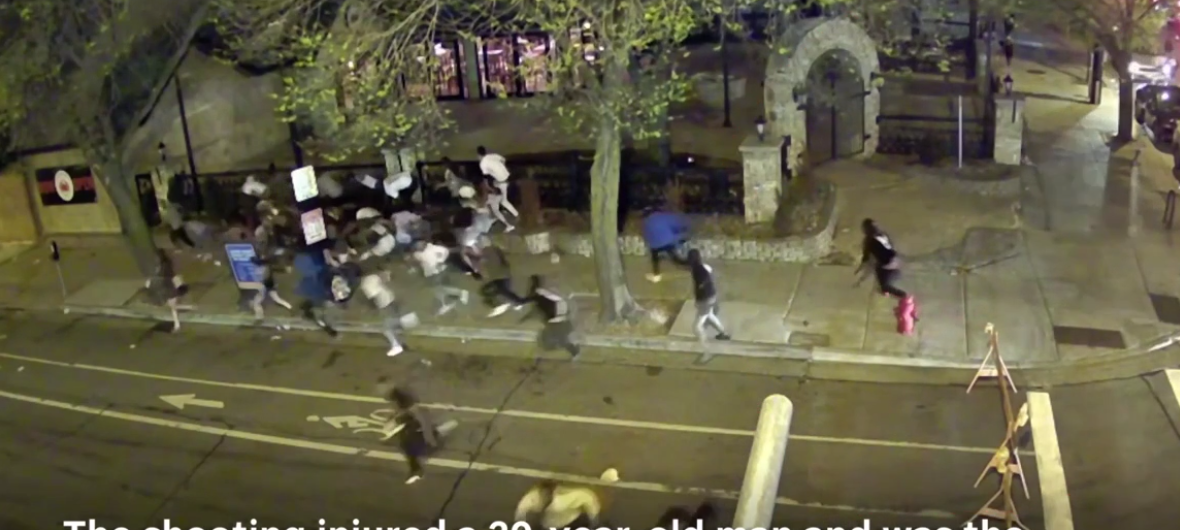
The Milwaukee Bucks 2022 Eastern conference semifinals should have focused on the team’s hopeful return to the finals, reminiscent of 2021’s historic NBA championship. But instead, the Friday night in May ended with 21 people injured from three separate shootings.
The city has seen increasing gun violence for the past few years. There were a total of 193 homicides in 2021, most of which were due to shootings. Year to date, there have been 162 homicides; this is an increase of 37 in comparison to this time last year. Of these homicides, shootings make up 91% of the cause of death.
This unsettling increase in gun violence has not gone unnoticed. Though gun violence has been a longstanding issue in the city, the shootings near the Deer District brought the matter to a national stage, and sparked social impact and cause marketing agency CMRignite to recently conduct a survey gauging the community’s outlook on the epidemic.
Although the Milwaukee-based agency has been working with nonprofit organizations in the city on matters such as violence prevention for years, “there hasn’t been, unfortunately, as much city wide support for [violence prevention] work until the Deer District [shootings],” CMRIgnite President David Bowles said in an interview. “We said, well, this is now hopefully an opportunity to shine light on a problem that’s existed for so long. It was more of an impetus to say, ‘Let’s push even harder to get the word out that there needs to be something done and something has to change.’”
According to the survey, over 80 percent of Wisconsin residents agree that gun violence in Milwaukee is a serious issue, with more than half saying it is the most important issue in the city.
The survey also found:
- Three-fourths of Milwaukee residents say that gun violence has gotten worse in Milwaukee over the past three years.
- Only 13% of Wisconsin residents agree that Milwaukee has effective ways to address gun violence.
- Wisconsin residents agree that support services for mental health and trauma, peer/mentor support and skills-based education to handle violence would be helpful in promoting safety and preventing gun violence in Milwaukee.
From these findings, Bowles shares that CMRignite has a multi-layered plan for violence prevention, beginning with inclusion of multiple stakeholders.
“We really want to ensure that this is an effort that’s got multiple voices at the table,” Bowles said. “It has to take a mix of our nonprofit, our government, our business, everyone coming together.”
Another layer is being mindful of how to encourage community involvement. Bowles said it cannot be a top down approach, but rather everyday people, who are positive influences in the community and determined to find a solution.
The final layer is ensuring the ability to sustain the plan and continue efforts, Bowles said. He knows that change will not happen overnight. What is important is to map out what the journey looks like and the investments made as a city.
“Our goal is to say, ‘let’s put together some concrete steps that we can take this data, we can make it actionable, we can come up with a behavior change model, and hopefully find a solution,’” he said.
It was important to Bowles that the agency focus on its audience and directly reach affected communities for the survey. This meant targeting not only Milwaukee members, but also looking at community members from the state as a whole.
“I think there’s a lot of talking heads, and a lot of businesses who don’t have that connection with the community. And they’re coming up with solutions that they think are getting to the problem,” he says. “But if you don’t talk to the folks who are living this every day, you don’t know what the problem is.”
To conduct the study, CRMIgnite over-indexed on Black and brown audiences living in key zip codes with the highest gun violence. When conducting the survey, the agency asked honest questions that would gauge how community members felt, and what differences the data would show between statewide and the city of Milwaukee.
“I would say [gun violence in the city] is a crisis,” Bowles said. “I would say that it’s a social crisis. It’s an economic crisis. It’s a moral crisis, and the folks that think that this is just kind of this one thing that siloed, they’re missing the whole point. This affects everything, it affects tourism, it affects business, it affects people’s feeling of safety, which has impacts on all sorts of decisions that they make. So we have to realize that this isn’t just in one community. . .it’s a problem that we all need to solve together.”
His overarching goal is driven and hopeful. “I want to decrease the amount of gun violence year over year. . . If we can start to move the needle in six months to a year, that would be a win, and really creating those pillars in those infrastructure pieces, so that we can start to get to move the needle. . .whether that’s us at the helm helping to drive that or whether it’s someone else. I honestly am more focused on the solution rather than looking at this as a business opportunity.”
It is this passion that drives the agency’s mission in cause and behavior change marketing. “I want people to know that we’re not doing this just for a paycheck, this is really about what we do all the time, and it matters to us, and the people who work for us are from this community. And so it’s real.”



